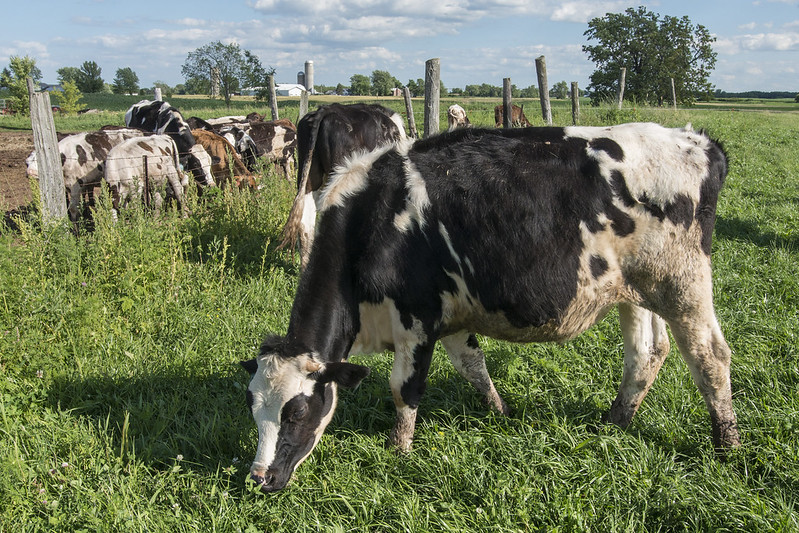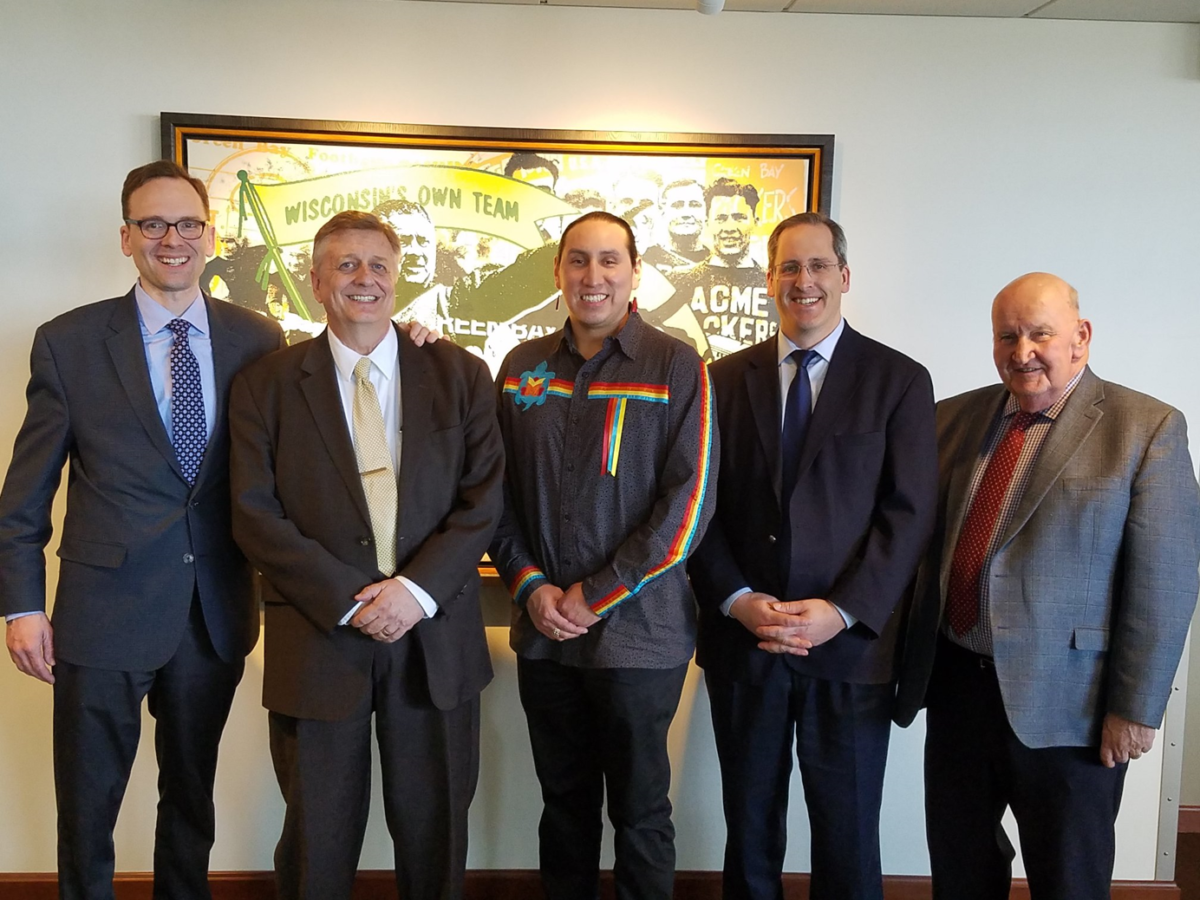For years, Green Bay has been plagued with harmful algae blooms and a deadzone. But on March 5, 2019 at Lambeau Field, the Alliance scored a victory on the path to make Green Bay more blue. Four county executives, representing the surrounding Brown, Outagamie, Winnebago and Fond du Lac counties, and the Oneida Nation signed the Northeast Wisconsin Water Quality Pact.
Oneida Nation Vice-Chairman Brandon Stevens joined Troy Streckenbach of Brown County; Tom Nelson of Outagamie County; Mark Harris of Winnebago County; and Allen Buechel of Fond du Lac County to sign this historic agreement. The agreement signifies their long-term commitment to improving the health of Lake Winnebago and Green Bay.
Green Bay has less than 2 percent of Lake Michigan’s water but receives more than one third of the phosphorus in the whole lake – a recipe for harmful algal blooms. And, every year, Green Bay suffers from a large deadzone, an area of low oxygen devoid of aquatic life, caused by excessive nutrients. All of these nutrients are carried into the water by runoff pollution, also called nonpoint pollution, and the largest single source comes from agricultural lands in the surrounding Fox and Wolf River watersheds, which comprise nearly one third of the state.

By signing the pact, the officials agreed to prioritize the significant reduction of nonpoint nutrient pollution entering their county’s waterways. The pact commits them to draft and adopt water quality goals, target dates, and metrics that will be incorporated into a management plan and a governance program for the watershed.
Since singing the Pact, the Alliance has worked with the parties to set a goal of a 60% reduction in phosphorus by 2040 with a more aggressive interim goal to achieve 30% by 2030. While the 30 for 30 goal is half of the ultimate goal, scientists and watershed managers expect even then to see significant benefits to the Bay.
“It is anticipated that achieving the significant 30 percent reduction in phosphorus in the Lower Fox River will significantly reduce dead zones, algae outbreaks, sediment plumes and nutrient pollution,” said Alliance Senior Policy Manager Todd Brennan. “In turn, regional stakeholders expect to experience healthier wildlife, improved recreation, less dredging, healthier soils and improved economic prosperity.”
The agreement was a significant step for the work the Alliance has been doing in the area. Last year, the Alliance held a series of clean water roundtables with farmers, researchers, government officials, business leaders, and more. Participants shared their perspectives on water quality and talked about what they can do to improve it. The roundtables were the first time many of the stakeholders were in the same room together and at the same table discussing Green Bay’s water quality problems. This innovative approach was a key step leading to the new water quality pact.

The signers of the pact, who were convened by the Alliance, are all vocal supporters of clean water and improving the watershed.
“It is our responsibility to ensure that our waterways are protected and maintained. Our Nation’s ancestors have utilized these waters since our arrival in the 1800s. The waters here were clean and pristine… a place where wild rice grew and the fish were abundant. It is our hope that one day these waters will once again be restored,” said Stevens, in a blog on Oneida Nation.
On Facebook, Brown County Executive Troy Streckenbach posted, “Today, I’m pleased to sign the Northeast Wisconsin Water Quality Pact to further highlight a shared vision for clean water in our whole region.”
In an interview with ABC2, Outagamie County Executive Tom Nelson said, “This is going to be good not only here in northeast Wisconsin, but working at best practices and ways in which we can show the rest of the state, the rest of the country.”
The pact is the first step on a long journey of improving the Bay, but through a diverse and regional approach, the Alliance is optimistic about our work for the blue future of Green Bay.
